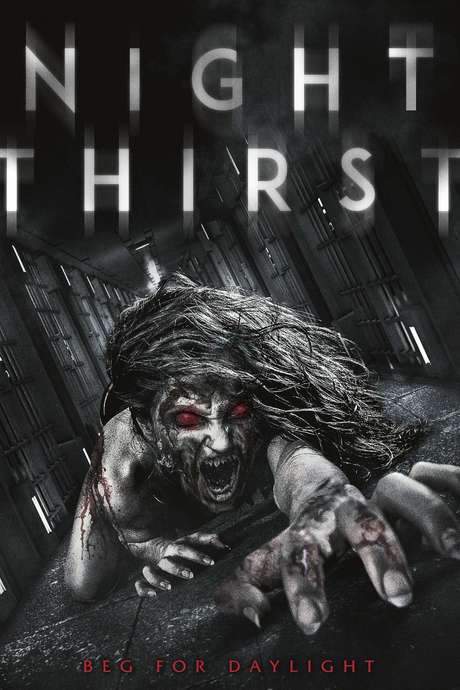
The Third Part of the Night
Year: 1971
Runtime: 107 mins
Language: Polish
Director: Andrzej Żuławski
During the Nazi occupation of Poland, Michał watches the brutal murder of his mother, wife and child. Shattered, he is thrust into a bizarre existence that feels alien, roaming a nightmarish landscape filled with trapdoors, doppelgängers, wormholes and shifting realities that echo his trauma and loss.
Warning: spoilers below!
Haven’t seen The Third Part of the Night yet? This summary contains major spoilers. Bookmark the page, watch the movie, and come back for the full breakdown. If you're ready, scroll on and relive the story!
The Third Part of the Night (1971) – Full Plot Summary & Ending Explained
Read the complete plot breakdown of The Third Part of the Night (1971), including all key story events, major twists, and the ending explained in detail. Discover what really happened—and what it all means.
During the Nazi occupation of Poland, a young man Michał bears witness to a brutal slaughter at his family villa—the murder of his wife, his child, and his mother. He and his father Michał’s Father manage to hide in a nearby forest and watch as the tragically intimate violence unfolds. This shock marks the beginning of a grim, brutal journey through a city under siege, where daily life is reorganized by fear, hunger, and the ever-present threat of brutality.
Seeking purpose amid the ruination, Michał decides to join the resistance. His plans are interrupted before they can truly begin when the Gestapo kills his go-between and chases him through the town. In the confusion he stumbles into the apartment of a pregnant woman and helps her give birth. The newborn’s mother seems to him a doppelganger of his murdered wife, a haunting echo that blurs the line between memory and reality. As he grapples with this eerie resonance, he pauses to talk with a group of nuns on a street. Among them is Sister Klara, who listens with quiet resolve as he asks about meaning in a world where cruelty seems omnipresent. A nun’s simple reply—grounded in the stark realities of hunger and cold—offers a stark contrast to Michał’s longing for deeper significance. Through these encounters, the atmosphere shifts from personal grief to a broader, almost metaphysical questioning of existence within the occupation.
In the city’s shadows, existence itself begins to feel like a nightmare. Michał wanders the streets and encounters an old acquaintance, Marian, who asks him to secure more rations. Marian’s reply—referring to Michał’s behavior as that of a “wild wind”—is echoed by Michał’s own insistence that he has been blessed with a family and a purpose worth fighting for. The talk veers from practical needs to larger questions about miracles and fate: Marian warns Michał that he is drifting into ungrounded hope, while Michał insists that survival must be pursued with a moral aim, even in a land where law and life have collapsed. The pair’s exchange underscores a central tension of the film: the struggle to retain humanity when every day’s reality seems to erode it. Michał and Marian–whose dialogue captures a sense of reckoning in the face of annihilation–illustrate how ordinary conversations become charged with existential weight in this fractured city.
Michał finds work in a typhus center’s lice-feeding labs, a grim but practical way to earn rations. He is accepted as a guinea pig and receives injections and an illegal vaccine that he claims is for his wife and child, a small but stubborn assertion of hope in a system that methodically strips away life. There, a nurse explains that this line of work is best for him, and that the patient who came before him died so he could take his place. The experience deepens Michał’s sense of the moral compromises people are forced to accept to endure. He also encounters a nun again in a moment of quiet sincerity, who reminds him of how older generations die from deprivation, yet the conversation leaves him with no easy answers about meaning. The woman with the baby that he helped protect recurs in his thoughts, and he delivers vaccines and food to her in the fragile hope of supporting someone through the siege.
The story intensifies as a mysterious masked man enters Michał’s life. The stranger, known as Mr. Rosencranc, visits Michał at night, giving him a book and speaking of prophecies and a fate that might connect him with the son he has lost. The masked man explains he wears the mask to avoid facing his own face, and he hints at travel to Switzerland while blessing Michał’s search for a second chance. The encounter ends with a violent interruption: men from the SD or Gestapo arrest an old lady and drag the masked man away, while Michał witnesses the seizure of innocence in the shadows of a graveyard. The events push him deeper into the murky, dreamlike continuum where memory and present danger blend.
Back at home, a surreal pattern emerges. Michał speaks with his father again, who reveals that he has never heard of “that man” before, suggesting a fragmentary, perhaps unreliable memory of events. A brutal street roundup follows, and the image of people being torn from their lives into trucks intensifies the sense that the world has become unrecognizable. Michał’s concern shifts to the fate of the woman and child he has already come to protect; he rushes to deliver food and rations, while the boy from the earlier visions returns in the darkness, reminding him that the old certainties no longer exist. In the laboratory, Michał’s attention turns to the tiny organisms that fed on his own blood, a grim symbol of how the body and life become battlegrounds in this war-torn landscape.
Resistance meetings bring him closer to those who still cling to a sense of duty, but the emotional toll grows heavier. He shares meals and attempts to sustain a fragile ecosystem of care with the woman he once helped bring into the world, a bond that becomes entangled with visions of his wife. The boy from the shadows appears again, this time to tell him starkly that “there is no you and me anymore,” a heartbreaking line that marks the dissolution of a shared personal fantasy in the face of militarized cruelty. A free man the two had seen on a previous night is later shot, and a different tragedy unfurls on the walls of a hospital—the life Michał has kept in motion now intersects with the grotesque, shifting realities of those around him.
The film’s most jarring sequences come as Michał observes the consequences of his actions and the war’s total collapse of moral order. He confronts the feeling that the past—especially the memory of his wife—could be retrieved only through others who resemble her, and he encounters a recurring image of death that refuses to be neatly explained. In a moment of exhausted, almost dreamlike clarity, he finds the woman he hoped to protect lying with him in a bed, only to realize that the woman is not his wife, but someone else entirely. The line between memory and reproduction blurs again, as the two women coexist in a shared space while the world outside seems to fall apart. “I have been finding you again,” he says to the vision of his wife, who replies that she can be found only in other people who are not themselves.
The closing image is harrowing and apocalyptic. Michał returns to the villa where it all began, finding the bodies of his family laid out as if in ritual. A biblical verse is recited by a woman applying makeup, and outside the window, the four horsemen of the apocalypse stand as a stark final emblem of the coexistence of faith, violence, and fate in a world that has lost its ordinary order. The film ends on a note of unsettling reverie, a meditation on the limits of human endurance and the price of trying to hold onto meaning when history erupts into nightmare.
“a cry must burst out of this country’s soul”
“wild wind”
[The cast listed above provides a spectrum of faces who appear throughout Michał’s nightmarish journey, each thread contributing to a larger meditation on memory, cruelty, and the search for meaning in the space between survival and humanity.]
Last Updated: October 07, 2025 at 09:41
Unlock the Full Story of The Third Part of the Night
Don't stop at just watching — explore The Third Part of the Night in full detail. From the complete plot summary and scene-by-scene timeline to character breakdowns, thematic analysis, and a deep dive into the ending — every page helps you truly understand what The Third Part of the Night is all about. Plus, discover what's next after the movie.
The Third Part of the Night Timeline
Track the full timeline of The Third Part of the Night with every major event arranged chronologically. Perfect for decoding non-linear storytelling, flashbacks, or parallel narratives with a clear scene-by-scene breakdown.

Similar Movies to The Third Part of the Night
Discover movies like The Third Part of the Night that share similar genres, themes, and storytelling elements. Whether you’re drawn to the atmosphere, character arcs, or plot structure, these curated recommendations will help you explore more films you’ll love.
Explore More About Movie The Third Part of the Night
The Third Part of the Night (1971) Scene-by-Scene Movie Timeline
The Third Part of the Night (1971) Movie Characters, Themes & Settings
The Third Part of the Night (1971) Spoiler-Free Summary & Key Flow
Movies Like The Third Part of the Night – Similar Titles You’ll Enjoy
The Night (2021) Film Overview & Timeline
3rd Night (2017) Plot Summary & Ending Explained
NightThirst (2002) Film Overview & Timeline
Puppet Master III (1991) Ending Explained & Film Insights
The Night of the Hunted (1980) Ending Explained & Film Insights
The 4th Man (1983) Movie Recap & Themes
Night Terror (1989) Movie Recap & Themes
Night Terrors (1993) Movie Recap & Themes
The Third Generation (1979) Detailed Story Recap
The Beast in Heat (1977) Ending Explained & Film Insights
The Third Day (1965) Story Summary & Characters
The Devil Strikes at Night (1957) Film Overview & Timeline
Mother Night (1996) Film Overview & Timeline
The Third Eye (1966) Full Movie Breakdown
Night of the Dark Full Moon (1972) Full Summary & Key Details

















